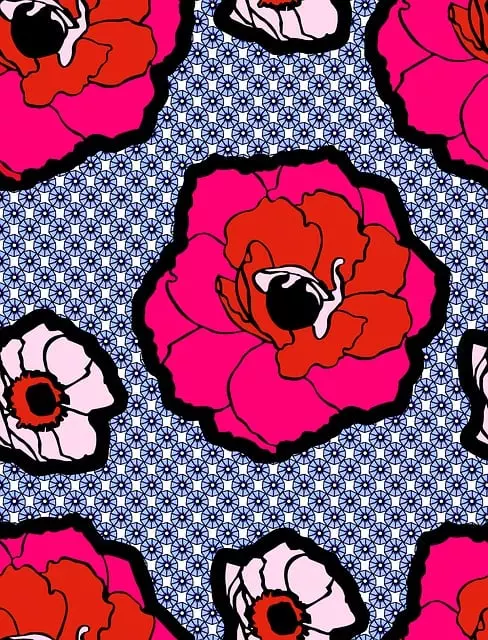Kratom, derived from Mitragyna speciosa, offers therapeutic benefits for injury management, including pain relief and reduced inflammation. Studies suggest its potential to stimulate hair growth, making it an appealing natural remedy for individuals recovering from conditions causing hair loss. Kratom's active compounds interact with opioid receptors to promote cellular regeneration and aid healing. When used responsibly as a complementary therapy, kratom can significantly improve overall well-being during rehabilitation, addressing both injury prevention and hair regrowth concerns.
Injury prevention and management have evolved to include alternative solutions, one of which is kratom. This natural herb has gained attention for its potential benefits in reducing pain and aiding recovery. Beyond its analgesic properties, studies suggest kratom may support hair growth, offering hope for those dealing with hair loss. This article explores how kratom can be a powerful tool in injury management, delving into its mechanism of action and effective strategies for maximizing its therapeutic effects, including tips on combining it with a balanced diet and regular exercise to promote overall well-being and potentially regrow hair.
- Understanding Kratom and Its Potential Benefits for Injury Management
- Addressing Hair Loss: Can Kratom Help Regrow Hair?
- Effective Strategies for Preventing and Managing Injuries with Kratom Use
Understanding Kratom and Its Potential Benefits for Injury Management

Kratom, a natural herb derived from the plant Mitragyna speciosa, has gained attention for its potential therapeutic benefits in managing various health conditions, including injuries. While often used for its analgesic properties to relieve pain and reduce inflammation, kratom’s effects extend beyond simple pain management. Studies suggest that kratom may stimulate hair growth and help with hair loss, a beneficial side effect for those recovering from injuries or illnesses that cause hair thinning. The active compounds in kratom interact with opioid receptors in the body, potentially reducing pain signals while also promoting cellular regeneration, which could aid in healing and tissue repair.
Injury prevention and management is a multifaceted approach, and incorporating kratom as a complementary therapy offers unique advantages. Its natural origin and relatively mild side effects make it an appealing option for individuals seeking alternative solutions. Moreover, kratom’s ability to alleviate pain and stimulate hair growth can significantly impact the overall well-being of injured individuals, encouraging faster recovery and potentially enhancing their quality of life during rehabilitation.
Addressing Hair Loss: Can Kratom Help Regrow Hair?

Hair loss is a common concern, and many seek natural remedies to address this issue. In recent years, Kratom—a herb known for its pain-relieving and stimulant properties—has gained attention for its potential benefits beyond pain management. Some users claim that regular consumption of Kratom can help in combating hair loss and even promoting hair growth.
Kratom’s ability to stimulate blood flow and improve circulation could be a key factor in encouraging hair regrowth. By enhancing the oxygen and nutrient supply to the scalp, it may create an environment conducive to healthier hair follicles. Research suggests that its active compounds can interact with various bodily systems, including those involved in hair growth. However, more studies are needed to fully understand its effects on hair loss prevention and to confirm these anecdotal reports.
Effective Strategies for Preventing and Managing Injuries with Kratom Use

Kratom, a natural herb known for its pain-relieving properties, offers a unique approach to injury prevention and management. When used responsibly, kratom can play a significant role in reducing inflammation and promoting healing. One of the key strategies is incorporating kratom into a comprehensive wellness routine. This includes regular exercise to strengthen muscles and improve flexibility, ensuring proper warm-up and cool-down periods to minimize strain. A balanced diet rich in essential nutrients supports tissue repair and overall well-being.
Additionally, managing stress through practices like meditation or yoga can complement kratom’s effects. While kratom is often used for its analgesic benefits, it’s crucial to remember that excessive use may lead to side effects, including potential hair loss. However, this doesn’t mean kratom causes permanent hair loss; proper management involves monitoring dosage and frequency. Promoting healthy hair growth alongside injury recovery can be achieved through a combination of dietary changes, reducing stress, and addressing any underlying health conditions that might contribute to hair loss.
Kratom has shown promise in various aspects of injury management, from preventing pain to potentially aiding in hair regrowth. While more research is needed, its natural properties make it a compelling alternative for those looking to manage injuries and side effects like hair loss. Incorporating kratom into a holistic wellness routine could be a game-changer, but always consult with healthcare professionals before trying any new supplement.






